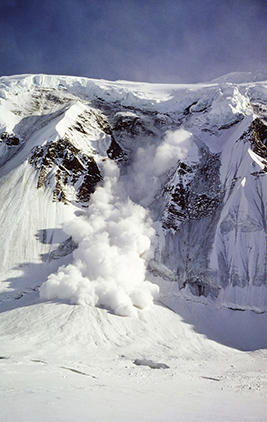15.1 Energy and Its Forms
Reading Focus
Key Concepts
 How are energy and work related?
How are energy and work related? What factors does the kinetic energy of an object depend on?
What factors does the kinetic energy of an object depend on? How is gravitational potential energy determined?
How is gravitational potential energy determined? What are the major forms of energy?
What are the major forms of energy?
Vocabulary
energy
kinetic energy
potential energy
gravitational potential energy
elastic potential energy
mechanical energy
thermal energy
chemical energy
electrical energy
electromagnetic energy
nuclear energy
Reading Strategy
Building Vocabulary Copy the partially completed concept map below. Then, as you read, complete it with vocabulary terms and definitions from this section.
The road that winds through the mountain valley was closed. Skiers were banned from the area. The sound of artillery fire echoed from the mountains. It seemed out of place in this picturesque scene of snow-covered peaks surrounding the valley. A moment of quiet followed the blast. Suddenly, the snow broke loose with a menacing roar. Tumbling down the mountainside, the snow buried everything in its path. You can see in Figure 1 the enormous mass of accumulated snow that had hung above the valley. After the avalanche, the valley was quiet again. It is safe for skiers and hikers to return to the area.
This is the work of researchers at the Avalanche Control Section in Glacier National Park, Canada. These scientists monitor the snow as it builds up layer by layer on the park's upper peaks. They can predict when an avalanche is about to happen. With well-timed artillery shots, they make the avalanche happen at a time when the released energy cannot harm anyone.
Figure 1 In an avalanche, a mass of loose snow, soil, or rock suddenly gives way and slides down the side of a mountain.






